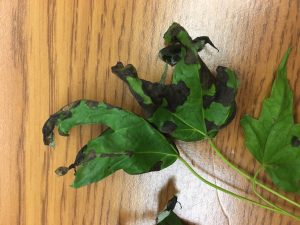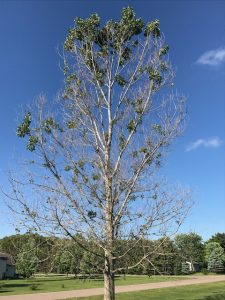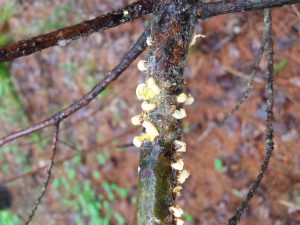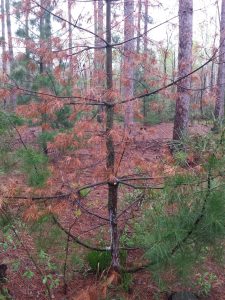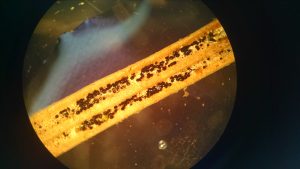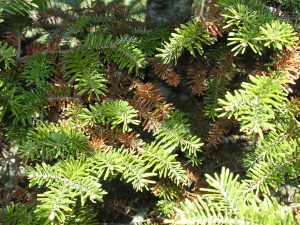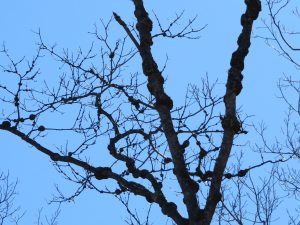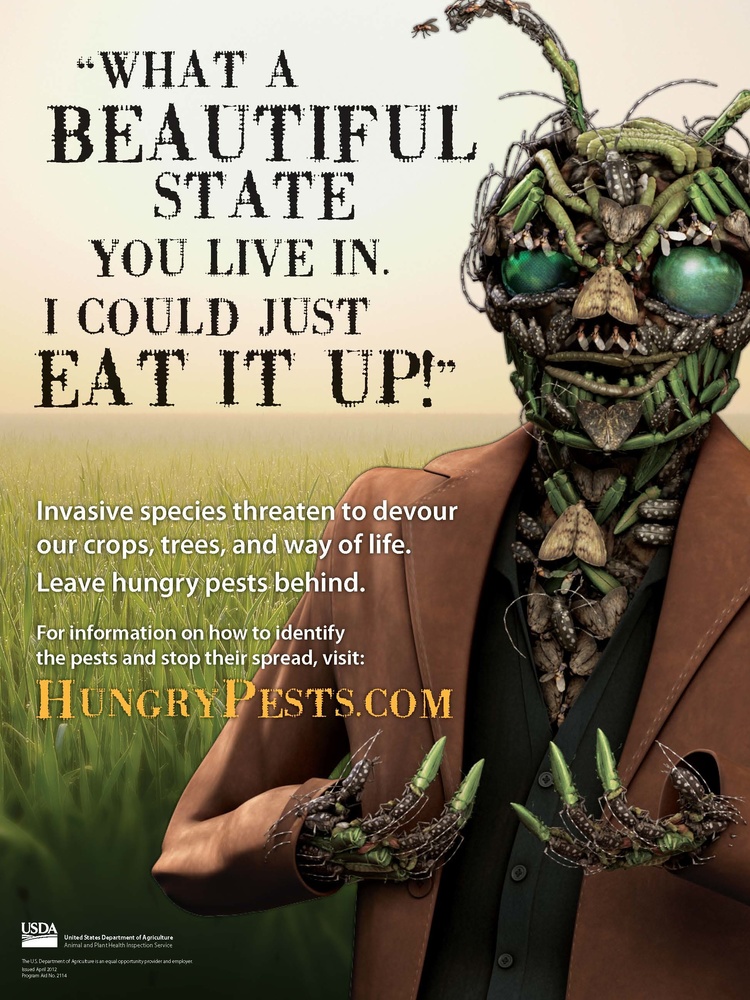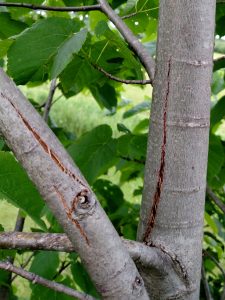
Young trees whipped by winds may have splitting bark on their branches or trunks. The trees will eventually grow over these, but first the wounds will dry out and open up a bit more.
Storms, storms, and more storms! It seems like we’ve had a lot of storms that brought severe weather this year. Storm damage to oaks at this time of year creates the risk of oak wilt introduction in new areas as the beetles that can spread oak wilt are attracted to the fresh wounds from the storm damage. Pine that is damaged by the storm can be infested by bark beetles, or blue stain can enter the wood via hail wounds, or Diplodia can kill branches that were damaged by wind or hail. When blowdown or tornado damage occurs it presents some additional forest health concerns with staining and decay. We have some information available online regarding storm damage, which currently highlights the May 16 tornado but applies to all tornado/wind damage to your trees.
Some of the storms during the past month are highlighted below.
Continue reading “Storm damage in May and June”

